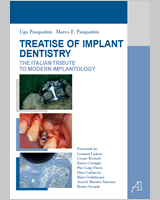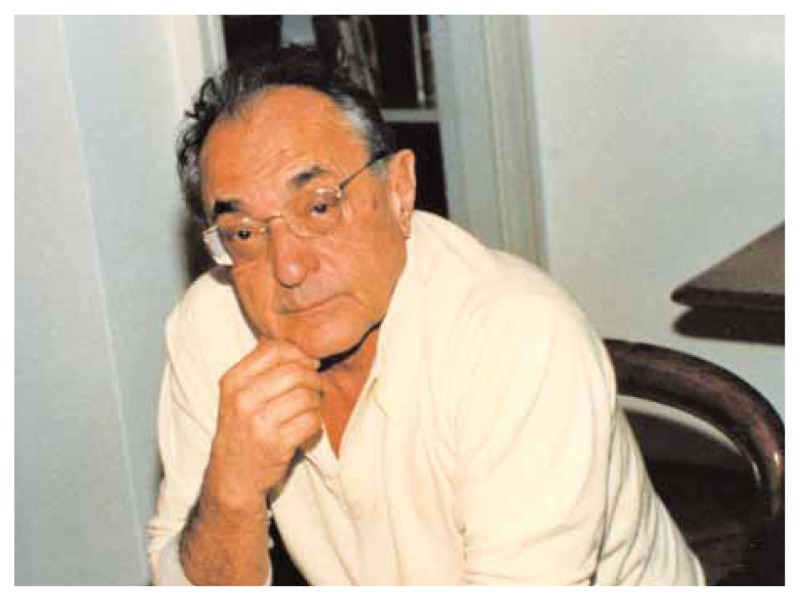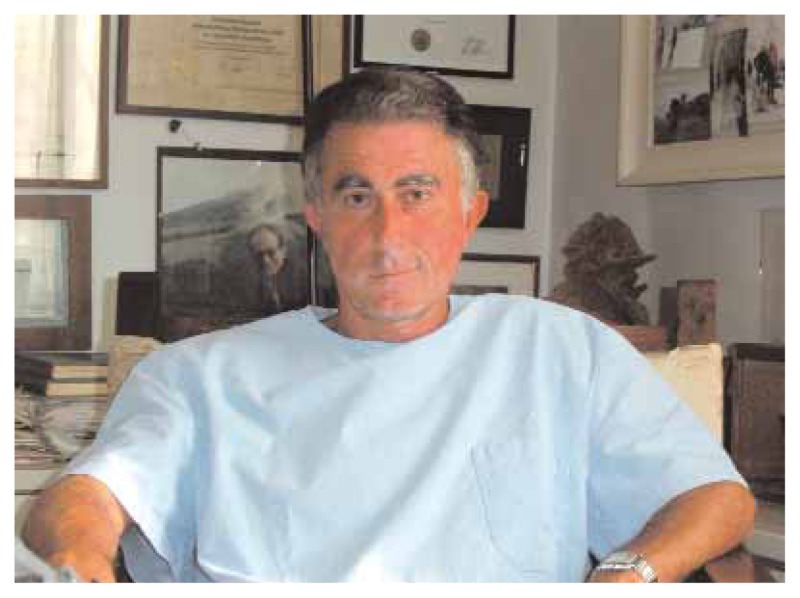All rights reserved. No part of this book covered by the copyrights hereon may be reproduced, stored, communicated or copied in any form or by any means - graphic, electronic, or mechanical including photocopying, taping, or information storage and retrieval systems - without written consent from Marco E. Pasqualini (tel. +39.02.799651).
DR. PROF. UGO PASQUALINI (1922–98)
He attended the University of Modena and graduated with a degree in medicine on July 27, 1948. He subsequently specialized in dentistry at the Zahn- und Kieferklinik of the University of Innsbruck, headed by Prof. K. Haüpl. For 25 years he was a non-tenured professor, teaching clinical maxillofacial prosthetics at the Specialization School of Dentistry of the Dental Institute of the University of Modena (1966–91). From 1952 to 1955 he was the scientific director of the journal Odontes. In June 1957 he was appointed member of the Board of Directors of the Research Commission on Psychosomatic Stomatology established at the Dental Institute of the University of Pavia, directed by Prof. Silvio Palazzi. In 1962 he won the top “Campione d’Italia” prize for the best scientific report presented at the International Italo-Swiss Dental Congress. From 1970 to 1985 he was member of the Board of Directors of ANIO (Associazione Nazionale Implantoprotesi Orale), which was chaired by Prof. Oscar Hoffer, director of the Dental Institute of the University of Milan. He served as the cultural secretary of the Milan branch of AMDI (Italian Dental Association) from 1975 to 1978. He was a board member of the GISI (Italian Implant Study Group), which was chaired by Prof. Giordano Muratori from 1970 to 1996. He then served as president of SOMECOI (Società Medico Chirurgica di Odontoiatria Implantoprotesica) from 1983 to 1998. The author of 71 scientific articles, he also wrote Le patologie occlusali. Eziopatogenesi e terapia, which was published by Masson in 1993. A renowned researcher and lecturer, he spoke at the most prestigious international scientific implantology congresses and presented histological works on blades at the Royal Society of Medicine of London. He taught theoretical and hands-on courses in implant dentistry at the University of Zurich, directed by Prof. Hugo Obwegeser. These courses were also presented at the most prestigious American, German, and Spanish venues. He also taught postgraduate courses on implantology, gnathology, prosthodontics, and periodontal surgery. He filed several patents on different implant morphologies and prosthetic-implant connections. Prof. Pasqualini also had a private practice in Milan until 1998. He was a courageous scientist who anticipated the current trend of implant dentistry, ranging from two-step implants to immediate-load implants, and his sole focus was scientific progress. Thanks to his research, the principle of reparative osteogenesis (osseointegration) has become a scientific priority.
DR. MARCO E. PASQUALINI
He attended the University of Milan, graduating with a degree in medicine, and then earned a postgraduate degree cum laude in dentistry at the University of Modena. He was non-tenured professor of clinical maxillofacial prosthetics at the School of Dentistry, which is part of the Department of Medicine at the University of Modena (academic year 1991–92). He held a non-tenured position with the Department of Medicine at the University of Bari, teaching “The role of plate-form implants in oral rehabilitation” as part of the course-work on oral diseases for the undergraduate program in dental hygiene (academic year 2001–02). He was also a non-tenured professor at the Department of Dental Sciences of the School of Medicine at the Gabriele d’Annunzio University of Chieti for the postgraduate course on clinical implantology and biomaterials (academic year 2004–05) and the theoretical-practical refresher course on electrowelded implantology (academic year 2005–06), both of which directed by Stefano Fanali, professor of dentistry). He has authored and coauthored 32 articles that have been published in national and international scientific journals, and has a personal photographic archive about dentistry composed of more than 20,000 slides. He worked with his uncle, Ugo Pasqualini, for 20 years in both daily practice and research work, and shares his scientific principles, outlined in the book Le patologie occlusali. Eziopatogenesi e terapia. He was vice president of AISI (Italian Academy of Implant Stomatology), and is a GISI (Italian Implant Study Group) fellow and a charter member of COM (Cenacolo Odontostomatologico Milanese). He was member of the board of directors of GISIGM (Giordano Muratori Italian Implant Study Group), directed by Prof. Francesco Mangini of the University of Bari. He has been president of the SOMECOI (Società Medico Chirurgica di Odontoiatria Implantoprotesica) since 1999 and is a charter member of AIIP (Academia Internacional de Implantologia y Periodoncia). He is an active member of ICOI (International Congress of Oral Implantologists) and SEI (Sociedad Española de Implantes) and serves as editorial advisor for the scientific journal Doctor Os as well as reviewer for the Journal of Osseointegration, published by Ariesdue (Carimate [Como], Italy). A national and international lecturer, he has taught postgraduate courses for updates on implantology and occlusions. Dr. Pasqualini has a private practice in Milan.
- The authors - Treatise of Implant DentistryThe authors - Treatise of Implant Dentistry
Your browsing activity is empty.
Activity recording is turned off.
See more...


